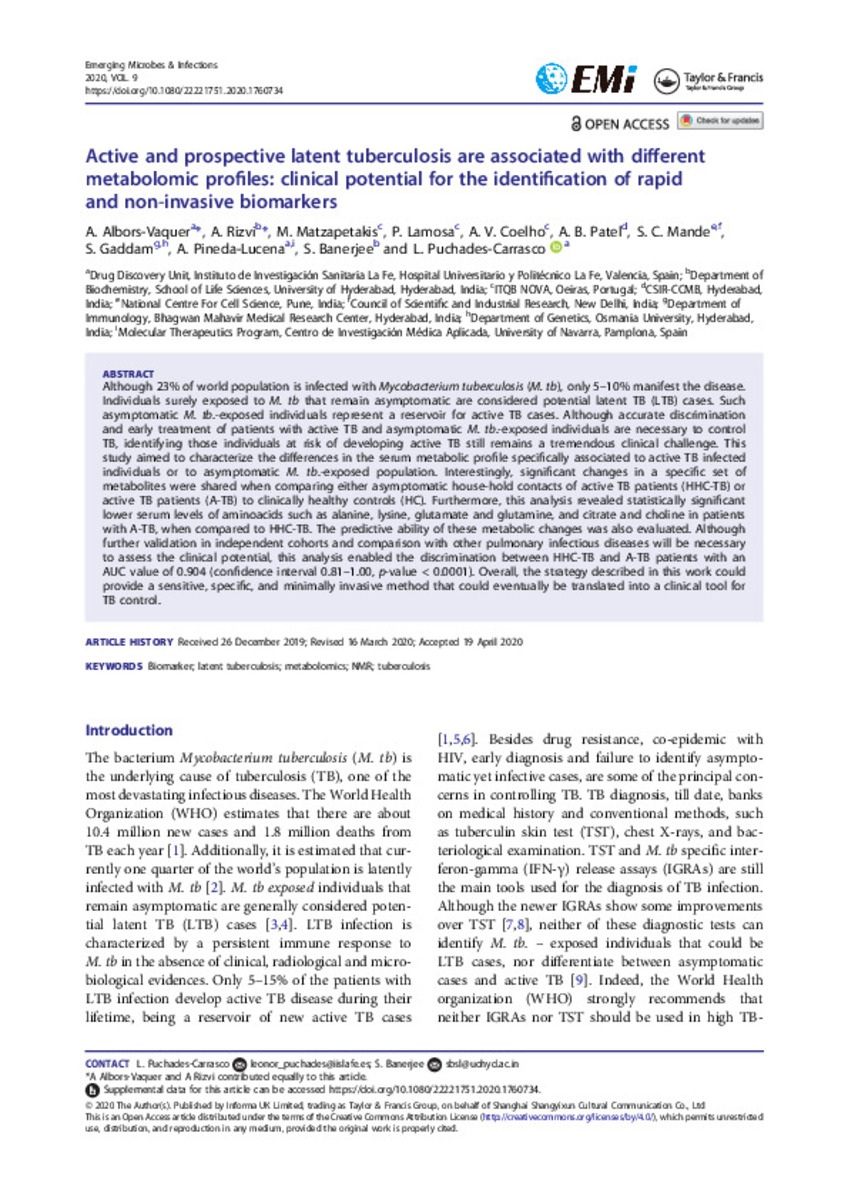Active and prospective latent tuberculosis are associated with different metabolomic profiles: clinical potential for the identification of rapid and non-invasive biomarkers
Palabras clave :
Biomarker
Latent tuberculosis
Metabolomics
NMR
Tuberculosis
Fecha de publicación :
2020
Nota:
This is an Open Access article distributed under the terms of the Creative Commons Attribution License (http://creativecommons.org/licenses/by/4.0/), which permits unrestricted use, distribution, and reproduction in any medium, provided the original work is properly cited.
Cita:
Albors-Vaquer, A.; Rizvi, A.; Matzapetakis, M.; et al. "Active and prospective latent tuberculosis are associated with different metabolomic profiles: clinical potential for the identification of rapid and non-invasive biomarkers". Emerging Microbes & Infections. 9 (1), 2020, 1131-1139
Aparece en las colecciones:
Estadísticas e impacto
0 citas en

Los ítems de Dadun están protegidos por copyright, con todos los derechos reservados, a menos que se indique lo contrario.







